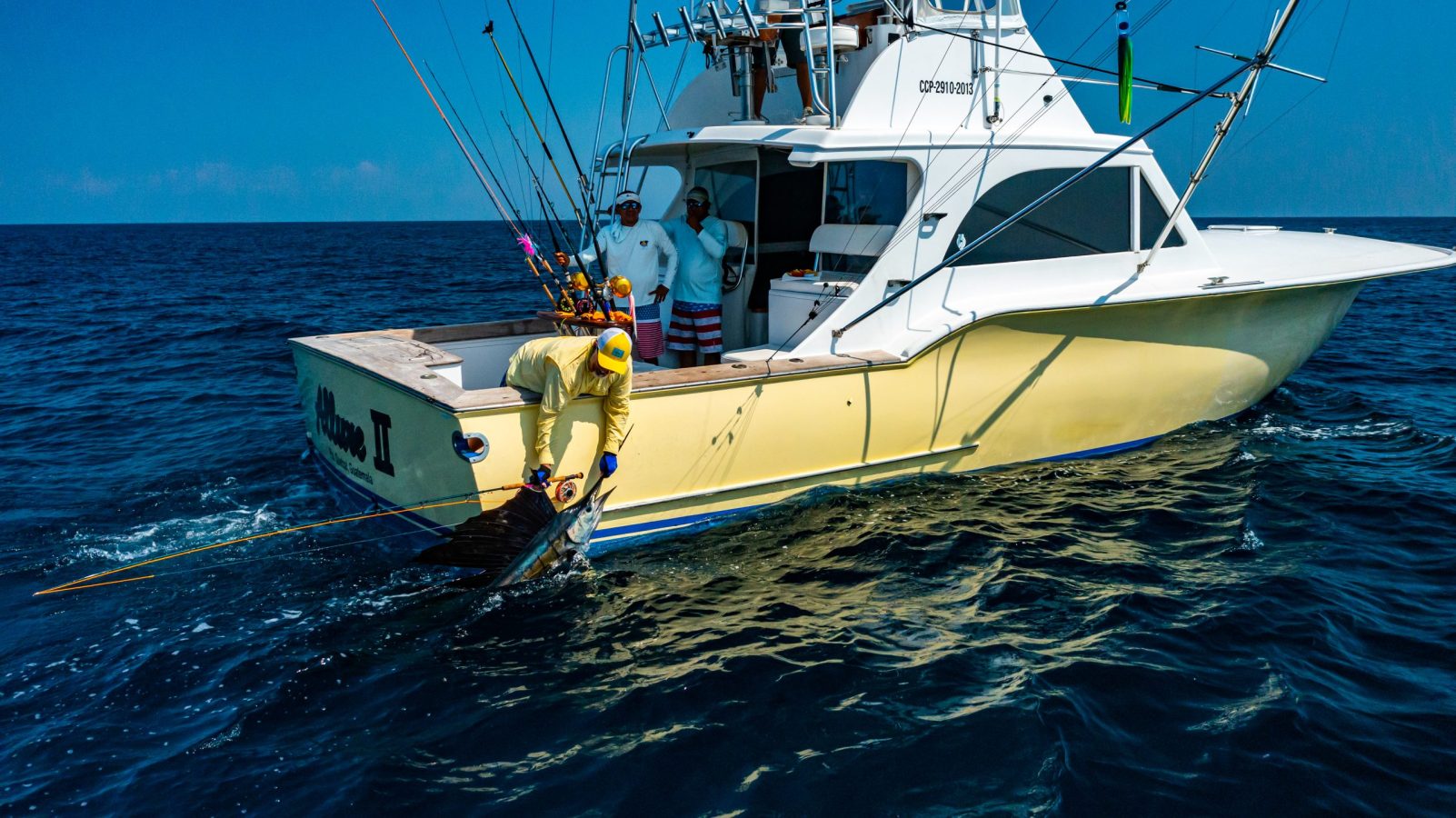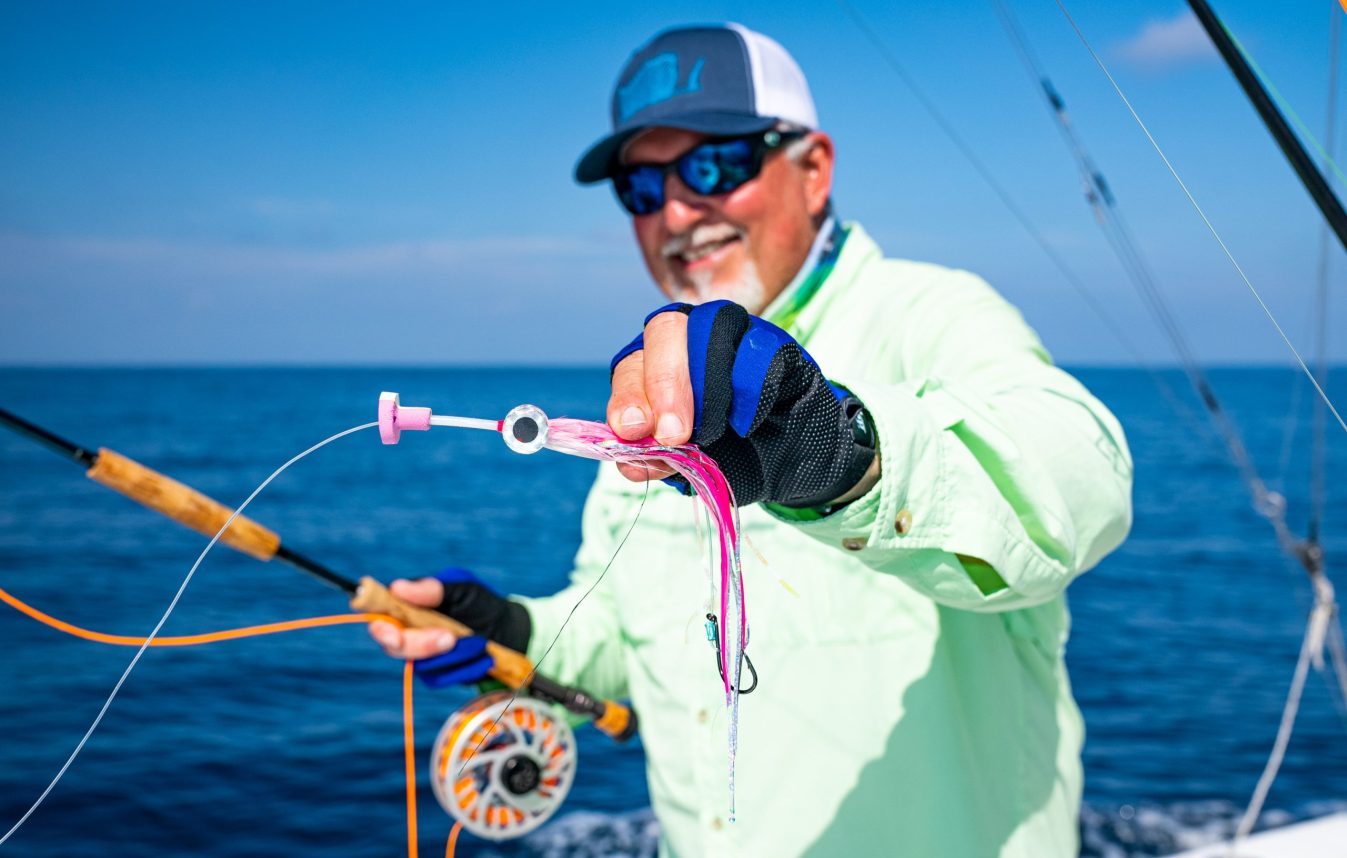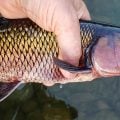Fly Fishing the Sailfish Capital of the World

The aerial ballet performed by a group of spinner dolphins had us all mesmerized when a warning from the bridge alerted everyone to assume battle stations.
“Left rigger, left rigger!” shouted Capt. Chico Alvarenga. From his vantage point, he was the first to spot the shadow lurking behind the bait. An instant later, the dorsal of a big Pacific sailfish sliced through blue water and the mate jumped on the respective rod to work the bait that sail was tracking. The day’s first game of cat-and-mouse had begun.
It didn’t take the fish long to decide this would be its next meal. Moving in for the kill, it swung its bill from side to side to strike and injure its prey. The mate let the sail briefly make contact before pulling the bait just out of its grasp as the rest of the crew reeled in other lines. I stood at the ready, waiting for the right moment to deliver my fly, praying I wouldn’t fumble and my line wouldn’t find any snags on the way to the target.
The teasing worked like a charm and the sail grew more aggressive by the second, pushing closer to the boat. In less than three minutes it was within casting range. I dropped the fly in our wake and yelled: “Ahora!” The captain shifted into neutral and the mate yanked the bait out of the drink as I delivered my pink-and-white offering.
The fly landed some six feet ahead and slightly to the left of the sail. After a couple of hard strips, the fish swung wide and doubled back with its mouth open, taking the fly on the run and going under the second it claimed the large streamer. I set the hook with a firm sidearm stroke then cleared loose line from the deck.
Pacific sailfish are famous for their aerial displays. This one followed the playbook combining spectacular jumps, violent headshakes, and a couple of frantic cartwheels interrupted by a high-speed dive during which the handle on my fly reel was a blur. I was lucky. The hook stayed put, the leader held, and the drag did its job, wearing down the billfish after an intense 30-minute bout. It was a good fish, approaching 120 pounds.
World-Class Fishery
This was late July, still a couple of months away from the beginning of peak sailfishing in Guatemala, yet the action was as good or better than any other billfish destination on Earth. By day’s end, we’d raised more than 20 sailfish plus a blue marlin, teased 16 of the sails within fly-casting range, hooked 13, and came back to the dock with nine release flags flapping on the outriggers. Such numbers would raise eyebrows in most places. But not here where top crews tally more than 2,500 releases most years and report 50- to 100-fish days with some regularity.
Location, Location
The region’s underwater topography and strong west to east currents set the stage for an offshore bonanza. A significant canyon that comes as close as 15 miles to Guatemala’s shores serves as a thoroughfare for big-game species. Meanwhile, the currents—after colliding with the jagged sea floor—create upwellings that send nutrient-rich, oxygenated waters toward the surface attracting a diverse buffet of forage that, in turn, draws scores of sailfish, marlin, tuna, dorado and more.
In addition, the Guatemalan government realized the importance of its amazing marine resources and made headlines when it took decisive action to ensure the protection of sailfish. Since 2002, it is illegal for anyone to kill sailfish in Guatemalan waters.

Ideal Training Grounds
Some 30 years after Tim Choate’s Fins and Feathers operation made the world take notice of Guatemala’s billfish rich waters, the fishery continues to thrive. The small Central American nation is still among the top offshore fishing destinations and retains its title of sailfish capital of the world.
The sheer numbers of sailfish in Guatemala present fly fishers with multiple shots at fish and equally plentiful opportunities to hone their skills. Hands-on instruction from the area’s experienced captains and mates shorten the learning curve as well. I can’t think of another place where anglers who wish to up their billfishing game can go from novice to seasoned after just three or four days on the water.
Bait-and-Switch
Trolling teasers plays a vital role in first attracting billfish with seasoned boat crews having their favorite configurations and components. Hook-less baits are also part of the trolling spread. When a billfish appears behind the spread, the teasers are reeled in and the baits are manipulated to focus the fish’s attention on just one. Then all other baits are pulled in and the real teasing starts.
Teasing the billfish with that single bait is the mate’s responsibility. The job is all about keeping a potential meal just out of the predator’s reach while reeling it ever closer to the boat’s transom. Rigged without a hook, the bait won’t sting the fish should it mouth or strike it with its bill. In fact, if the bait is hardy and rigged properly (a trolling lure paired with a sewn-up ballyhoo or strip of tuna or dolphin belly is the usual choice), letting the billfish grab and taste it for an instant before pulling it away will fire up the pursuer even more. All that’s left is to draw the fish a few feet nearer and yank the bait out of the water as the angler presents the fly.
Considering the cast is made from the back of a moving boat—likely with a tower, antennas and outriggers, all rocking with the waves—the delivery should be more of a lob achieved with a sidearm motion to avoid protruding obstacles. If the fly caster is right-handed, only the left outrigger is employed to widen the trolling spread, leaving the other up and out of the way for added casting clearance. Of course, if he or she is left-handed, the opposite applies.
Moment of Truth
Since most billfish flies are bulky and heavy when wet, the casting range is usually reduced to 35 feet or less depending on the angler’s casting skills and fly line/leader configuration. The crewmember teasing the fish must understand the casting-distance limitation in order to draw the target within a comfortable range. They and the angler should agree beforehand on who will call for the bait to be pulled from the water so that the cast is synchronized and the fly lands in the immediate vicinity no more than a second later. The job of the captain, at that point, is to shift the motors into neutral for the few seconds it takes to feed and hook the billfish.
Pulling 40 feet of line off the reel and laying them neatly—in big coils—on the cockpit deck, next to the spot where the angler will stand, is the best way to prevent tangles. Rather than gradually feeding fly line and keeping it in the air during false-casting (a difficult task considering the heft of the fly), many anglers prefer to drop the big streamer in the water while a fish is teased, letting it and several feet of fly line drag behind the boat until it’s time to take the shot. Aided by tension from the water, the angler can load the rod and shoot the necessary length of line with a single false-cast.

Top Billfish Fly Choices
Tube flies, like the popular Cam Sigler big game or similar billfish streamers tied with synthetic materials, are the way to go. They slide up the leader when a fish jumps or sounds, minimizing torque on the hook and helping it stay pinned. And because noise and splash help the fish zero in, a popper head is strongly recommended. Instead of the kind that remains a fixed part of the fly, however, it’s best to place a separate popper head six to eight inches ahead of the fly, which will then remain under the surface film when stripped, increasing the odds for a solid hook-set. To keep the popper head in place, simply jam a toothpick in the hole to snug it against the leader.
When it comes to fly colors, blue-and-white and purple-and-black are effective schemes, especially during cloudy days and early or late in the day. Nevertheless, pink-and-white is the overwhelming favorite. It doesn’t really resemble any of the sailfish and marlin’s natural prey, but these billfish see that color combo well in the water and rarely turn it down. As an added bonus, the brighter-colored offerings are also easier for the angler and the boat crew to track.
Gearing Up
As for tackle, the 12-weight outfit one would use for tarpon will serve well for sailfish. For marlin, however, a beefier 14 or 16-weight rod matched with a large-capacity reel designed specifically for big game is a better choice. I’ve found my TFO Bluewater series rod and Nautilus CCF-X2 Silver King reel to be a good compromise. The combo has repeatedly proven up to the task. I carry 500 yards of gel-spun backing for peace of mind.
The two other things I recommend are a pair of fingerless gloves and a lightweight fighting belt with a shallow cup to rest the butt of the fly rod without interfering with the reel. Even if you don’t have a long battle with a marlin, the sheer number of sails you are likely to encounter in Guatemala places considerable strain on your hands, arms and back, so it helps to accessorize.
Visit Midcurrent Travel’s Guatemala web page for more details and photos of the top lodges in the region.











